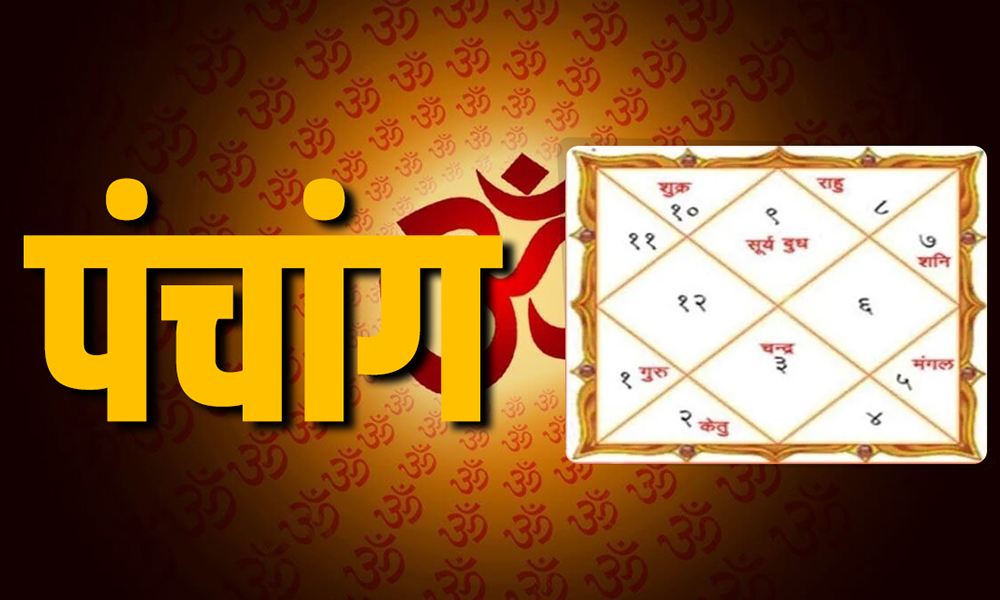Panchang in Vedic Astrology: Meaning, Importance, and Complete Guide

A Panchang is one of the most significant elements of Vedic Astrology and Hindu traditions. More than just a calendar, it is a spiritual almanac that details planetary positions, lunar phases, solar movements, and auspicious timings. In ancient India, it was considered essential for daily life, as every ritual, journey, and important activity was planned only after consulting the Panchang. The Sanskrit word Panchang means “five limbs of time,” symbolizing the five crucial components that define the quality and outcome of a given period. These five are Tithi (lunar day), Vaar (weekday), Nakshatra (constellation), Yoga (planetary combination), and Karana (half of a lunar day). Together, they help people align their actions with the cosmic order, thereby enhancing chances of success and harmony. Panchang is widely used across India under different names. In Bengal and Odisha, it is known as Panjika, in South India it is called Panchangam, while in the North it is commonly called Panchang. Although regional versions differ slightly, the purpose remains the same—guiding individuals to live in sync with planetary rhythms.
What is Panchang?
A Panchang can be described as a Hindu calendar with astrological depth. Unlike the simple Gregorian calendar, which is purely solar-based, Panchang combines both lunar and solar calculations. It records the movement of the Sun, Moon, and other planets, providing a detailed astrological framework to calculate Shubh Muhurat (auspicious times), forecast planetary influences, and schedule religious ceremonies. Astrologers rely on Panchang to prepare accurate birth charts (Kundali), determine planetary dashas, and predict important life events. For common people, Panchang is equally useful in identifying festivals, fasts, and auspicious timings for weddings, journeys, business deals, or spiritual practices.
Panchang is not just an astrological almanac but a bridge between cosmic movements and human actions. By understanding its five elements—Vaar, Tithi, Nakshatra, Yoga, and Karana—one can make better decisions in life and live in harmony with planetary forces. Its influence extends from festivals and rituals to agriculture, daily tasks, and astrology predictions. Despite modern technology, Panchang remains a timeless guide to align human life with universal energies.
Why is Panchang Important in Astrology?
Panchang serves as the foundation of Vedic astrology. As celestial bodies constantly move, they emit energies that impact life on Earth. Panchang captures these cosmic vibrations and translates them into practical guidance. Some key reasons why Panchang is important include: it determines auspicious and inauspicious timings, helping people avoid unfavorable periods, it guides the timing of religious and cultural rituals such as marriages, housewarmings, or temple ceremonies, it helps astrologers interpret planetary influences on an individual’s chart, it provides accurate details about eclipses, solstices, equinoxes, and seasonal transitions, it acts as a spiritual guide by highlighting fasting days, festivals, and sacred observances, and it ensures that human activities remain aligned with cosmic energies, thereby maximizing prosperity, peace, and health.
The Five Elements of Panchang
As its name suggests, Panchang is based on five essential factors that govern daily time and influence human life.
1. Vaar (Day of the Week)
Each day of the week is ruled by a planet, influencing energy and activities. Sunday is ruled by the Sun (leadership, vitality), Monday by the Moon (emotions, sensitivity), Tuesday by Mars (courage, aggression), Wednesday by Mercury (intellect, communication), Thursday by Jupiter (wisdom, prosperity), Friday by Venus (love, wealth, creativity), and Saturday by Saturn (discipline, karma, challenges). Aligning tasks with the ruling planet enhances results. For example, starting education on a Wednesday or spiritual practices on a Thursday is considered highly beneficial.
2. Tithi (Lunar Day)
A tithi is the angular distance between the Sun and the Moon. Each lunar month has 30 tithis, divided into Shukla Paksha (waxing Moon) and Krishna Paksha (waning Moon). Tithis determine fasting days, festivals, and rituals. For example, Ekadashi tithi is ideal for fasting, Purnima (full moon) is associated with spiritual growth, and Amavasya (new moon) is linked with ancestral rituals.
3. Nakshatra (Constellation)
There are 27 Nakshatras in Vedic astrology, each covering 13°20’ of the zodiac. Nakshatras deeply influence personality traits, career choices, relationships, and destiny. For instance, Rohini Nakshatra is linked with beauty and creativity, while Moola Nakshatra is associated with spirituality and research. Nakshatras also play a vital role in Kundali matching for marriage compatibility.
4. Yoga (Planetary Combination)
Yoga refers to the angular relationship between the Sun and Moon. There are 27 Yogas that influence the quality of a day. Some Yogas like Siddhi Yoga or Shubha Yoga bring prosperity and success, while others like Vyatipata or Gand Yoga may cause obstacles or challenges.
5. Karana (Half of a Tithi)
Each tithi is divided into two halves known as Karanas. There are 11 types of Karanas, of which four are fixed and the rest rotate. They are used to determine suitable timings for starting new ventures, performing rituals, or undertaking journeys. For example, Bava and Balava Karanas are auspicious, while Vishti Karana is inauspicious.
Panchang vs Calendar
A common misconception is that Panchang is the same as a calendar. While both provide information about days and months, Panchang is far more advanced. A calendar only tracks the passage of time, but Panchang integrates astronomy and astrology to provide cosmic guidance. It not only tells you when a festival will occur but also why it is celebrated at that particular planetary alignment. This is why Panchang is regarded as a sacred guide, whereas calendars are seen as practical tools.
Panchang and Shubh Muhurat
One of the most popular uses of Panchang is in determining Shubh Muhurat. Vedic wisdom emphasizes that every action performed at the right time yields better outcomes. Whether it is a wedding, housewarming, or business deal, astrologers check Panchang to identify favorable planetary alignments. By aligning human actions with divine timings, Panchang helps maximize success and reduce risks.
Types of Panchang
Across India, several types of Panchang are used based on regional traditions. The most common are: Drik Panchang, which is based on actual astronomical positions of celestial bodies, Vakya Panchang, which uses ancient verses and traditional formulas, Tamil Panchangam, popular in Tamil Nadu for temple rituals, Telugu Panchangam, widely used in Andhra Pradesh and Telangana, and Bengali Panjika, followed in West Bengal for festivals like Durga Puja. These variations highlight the diversity of Indian traditions while preserving the core essence of Panchang.
Panchang and Doshas
Astrological doshas like Rahu Kaal, Gulika Kaal, and Yamaganda are mentioned in Panchang. These are inauspicious time periods where starting new activities is avoided. For example, Rahu Kaal is ruled by the shadow planet Rahu and is considered unfavorable for beginnings. By avoiding dosha timings and choosing auspicious slots, Panchang helps people minimize negative planetary effects.
Panchang in Festivals and Rituals
Almost all Hindu festivals such as Diwali, Holi, Navratri, Raksha Bandhan, and Janmashtami are celebrated based on Panchang dates and timings. Similarly, life events like marriage, Griha Pravesh, Annaprashan, and Naamkaran are performed only at muhurats calculated through Panchang. This ensures divine blessings and smooth completion of rituals.
Panchang and Agriculture
In ancient times, Panchang was also used as a guide for agriculture. Farmers relied on lunar cycles and Nakshatras to decide the best times for sowing seeds, irrigating crops, or harvesting. Certain Nakshatras like Rohini and Mrigashira were considered favorable for farming activities. Even today, many rural communities use Panchang for agricultural planning, proving its timeless relevance.
Panchang in Daily Life
A daily Panchang provides essential details like sunrise, sunset, moonrise, moonset, tithi, nakshatra, yoga, karana, and inauspicious periods. Many people begin their day by consulting the Panchang to align their routine with cosmic energies. This not only adds spiritual balance but also improves decision-making.
Panchang in the Digital Era
With technological advancements, Panchang is now available online and in mobile apps. Websites offer free daily Panchang, festival dates, muhurat calculators, and personalized astrological insights. While earlier people had to consult astrologers or printed almanacs, today Panchang is accessible globally at a single click, making it relevant even in modern lifestyles.
Frequently Asked Questions (FAQs) on Panchang
Q1. What is the difference between Panchang and Calendar?
A Panchang is a detailed astrological almanac while a calendar only records dates and months. Panchang includes tithi, nakshatra, yoga, and muhurat.
Q2. Why is Panchang important for astrology?
It provides the necessary astronomical data for accurate horoscope predictions, dashas, and favorable timings.
Q3. How many types of Panchang exist in India?
There are several regional variations like Drik Panchang, Vakya Panchang, Tamil Panchangam, Telugu Panchangam, and Bengali Panjika.
Q4. What are the five elements of Panchang?
The five limbs are Vaar (day), Tithi (lunar day), Nakshatra (constellation), Yoga (planetary combination), and Karana (half tithi).
Q5. Can Panchang help in finding marriage dates?
Yes, Panchang is essential for identifying auspicious muhurat for weddings, ensuring harmony and success.
Q6. What is Rahu Kaal in Panchang?
Rahu Kaal is an inauspicious period ruled by Rahu during which starting new tasks is avoided.
Q7. Is Panchang relevant today?
Yes, even in modern times Panchang is used for festivals, rituals, muhurat selection, and astrological predictions.
Q8. How is Panchang used in agriculture?
Farmers traditionally used Nakshatras and lunar phases from Panchang to decide sowing and harvesting times.

